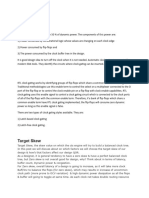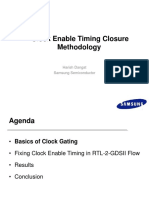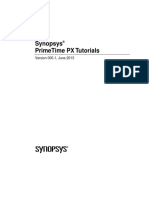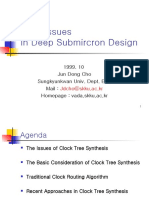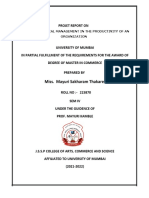100% found this document useful (2 votes)
3K views50 pagesCLock Tree Synthesis PDF
The document discusses clock tree synthesis (CTS). It provides an introduction to CTS, including its objectives and basic terminology. It discusses clock routing algorithms like H-tree and X-tree algorithms. It also covers clock distribution techniques, inputs required for CTS, the general CTS process, and effects of performing CTS. The presentation aims to provide an overview of CTS.
Uploaded by
Mudit AgarwalCopyright
© © All Rights Reserved
We take content rights seriously. If you suspect this is your content, claim it here.
Available Formats
Download as PDF, TXT or read online on Scribd
100% found this document useful (2 votes)
3K views50 pagesCLock Tree Synthesis PDF
The document discusses clock tree synthesis (CTS). It provides an introduction to CTS, including its objectives and basic terminology. It discusses clock routing algorithms like H-tree and X-tree algorithms. It also covers clock distribution techniques, inputs required for CTS, the general CTS process, and effects of performing CTS. The presentation aims to provide an overview of CTS.
Uploaded by
Mudit AgarwalCopyright
© © All Rights Reserved
We take content rights seriously. If you suspect this is your content, claim it here.
Available Formats
Download as PDF, TXT or read online on Scribd
/ 50



